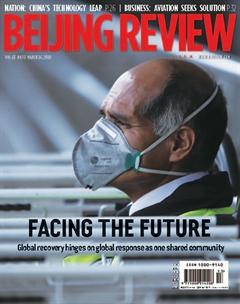Emergence of A Technological Society
By Josef Gregory Mahoney


The emphasis on developing science and technology and closing the gap that had emerged historically between China and the West has been and remains a key goal of Chinese leaders who have long understood that the Chinese nations rejuvenation depends on it. Today, on many fronts, these efforts have paid major dividends, with China increasingly drawing even with and in some cases surpassing leading international competitors. This in turn has led increasingly to what I call a rising Sino(techno)-phobia, i.e., a fear of Chinese technological advances, particularly in Washington, which has targeted especially Chinas 5G leader Huawei, as a threat to Western technological dominance.
Technical to technological society
China has long been an advanced technical society as popularly attested by the Four Great Inventions (papermaking, compass, printing and gunpowder), as underscored exhaustively by British biochemist, historian and sinologist Joseph Needhams series on the history of Chinese science and technology. As D.E. Mungello, a U.S. historian, describes elsewhere, when Europeans traveled to China to visit the Ming (1368-1644) court in the 16th century, the technological and cultural advances observed by these visitors led some to classify Chinese people as “white.” It was only later, when the Qing Dynasty (1644-1911) was in decline and Europe was on the rise that Orientalism colored Chinese both yellow and scientifi cally inferior.
Among those initial European encounters were Jesuit priests and scholars, who brought their best propaganda with them aiming to convert Chinese to Christianity and extend Western infl uence.
The development of European art and aesthetics had led to advances in realism in artwork, and their religious themed paintings sought to impress both hearts and minds.
However, according to Peter Golas, a professor of history at the University of Denver, the Chinese were not impressed. While Chinese acknowledged the technical marvel of realism, they found the mish-mash of brushstrokes used to produce it to be too inelegant. They also judged realism to be both inartistic and deceitful. In other words, they viewed these works as being technologically flawed insomuch as art must be found fi rst in the stroke and fi nally in the aesthetic purpose of the work. And what was the aesthetic value of reproducing reality except to present it in an unrealistic way, e.g., to promote religious ideological narratives?
In the 20th century, scholars began to debate the so-called Needham puzzle. They asked, why did China fail to develop as Europe did the Enlightenment and Industrial Revolution despite enjoying essential cultural and scientifi c advances at least a century ahead of all others?
Dozens of scholars have addressed the Needham puzzle and put forward a great number of theories aimed at solving it. Their arguments variously emphasize cultural, institu- tional, geographical and economic differences, and there are many other possible explanations, including the destabilizing impact of the Mini Ice Age, as Chinese meteorologist Zhu Kezhens groundbreaking research fi rst explored almost a century ago.
In fact, many of these views are compelling, especially when they are combined with each other, insomuch as the conditions they describe are deeply intersectional; but all of them fail to differentiate between a technical and a technological society.
In Chinas case, its incredible expertise in flood control, irrigation, development of effective professional governance in a large state and other forms of technological development indicate its achievements as a technical society. It ought to be clear to everyone that Chinese writing among other cultural products is among the most technically oriented in the world. However, a technological society is one that transcends the mere utility of technique and instead puts technology in the first position, and that is what happened first in the West and then elsewhere.
The French philosopher and theologian Jacques Ellul introduced the concept of the technological society in 1954, and with concerns similar to those raised by the German philosopher Martin Heidegger, marked its emergence in Europe as a moment when the West inverted a longstanding hierarchy: Instead of tools serving people, the order was effectively reversed and people instead served tools or simply became more like a tool. Ellul and Heidegger were both horrifi ed by these developments, and the latter even drew inspiration from Japanese Zen Buddhism, which originated in China, in his lifelong criticisms of technologys growing supremacy.


Second, it risks a deepening and mutually destructive conflict. Some believe this has already appeared in the growing calls for“decoupling,” but plausible, worst-case scenarios that may follow can be found in the post-human landscapes described recently by Jairus Victor Grove in Savage Ecology: War and Geopolitics at the End of the World (2019). In fact, the problem isnt simply that the worstcase scenarios of harming each other might emerge, although indeed they might. Rather, a more immediate concern is that the world today requires more integration and working with each other in order to address problems like climate change, global economic recession, and the current global pandemic of COVID-19.
Third, despite the social and cultural costs associated with technology and the rise of technological society, and despite the need to better control these developments in ways that preserve humanity, to suppress others technological development while advancing ones own is both hypocritical and unjust, and will only produce more harm than good.
Chinas emergence as a leading technological society is irreversible at this point, and the sooner this fact is absorbed intelligently, without Sino(techno)phobia and bellicosity, and instead with moves toward responsible exchange and partnership, the better.

